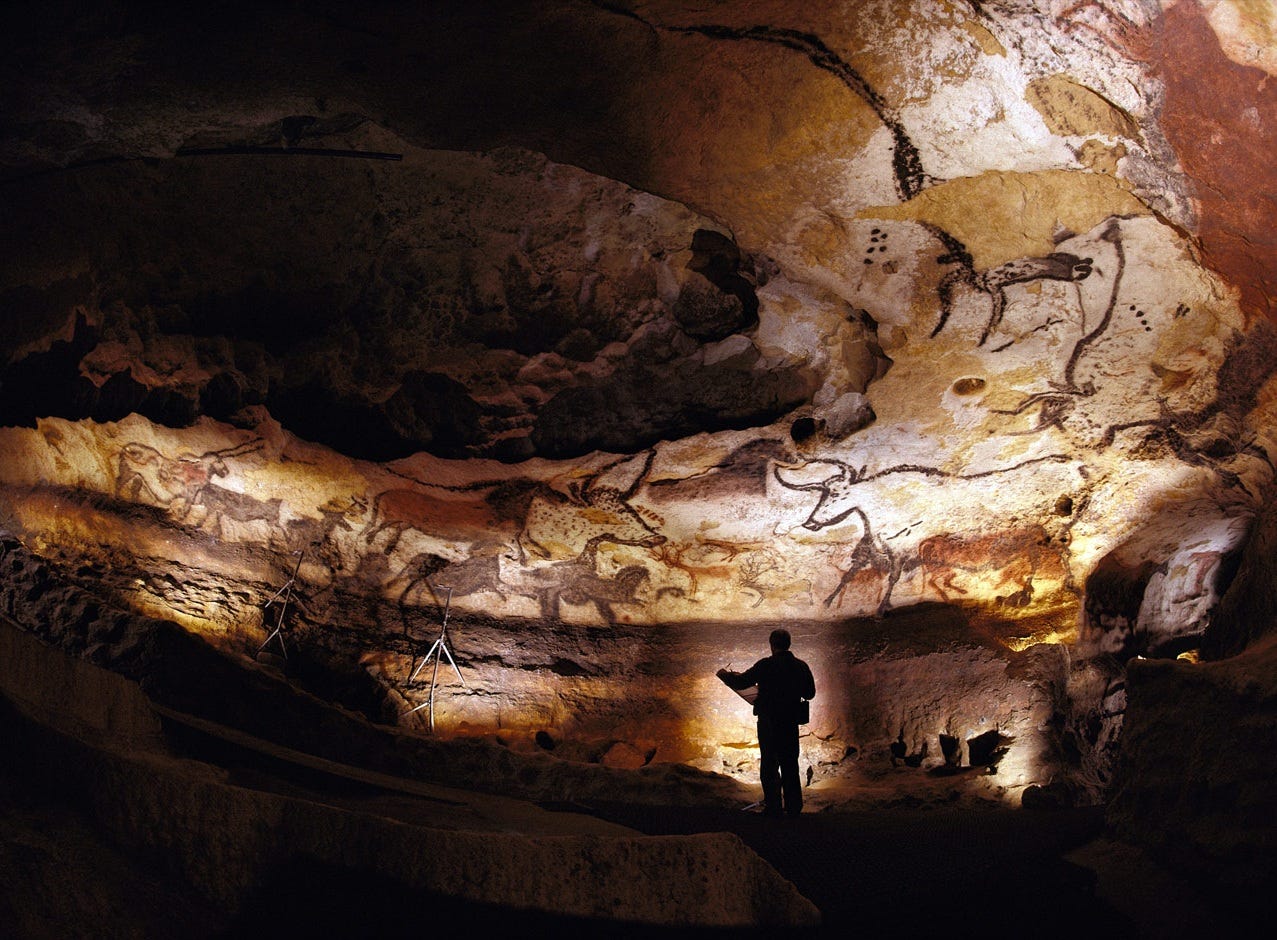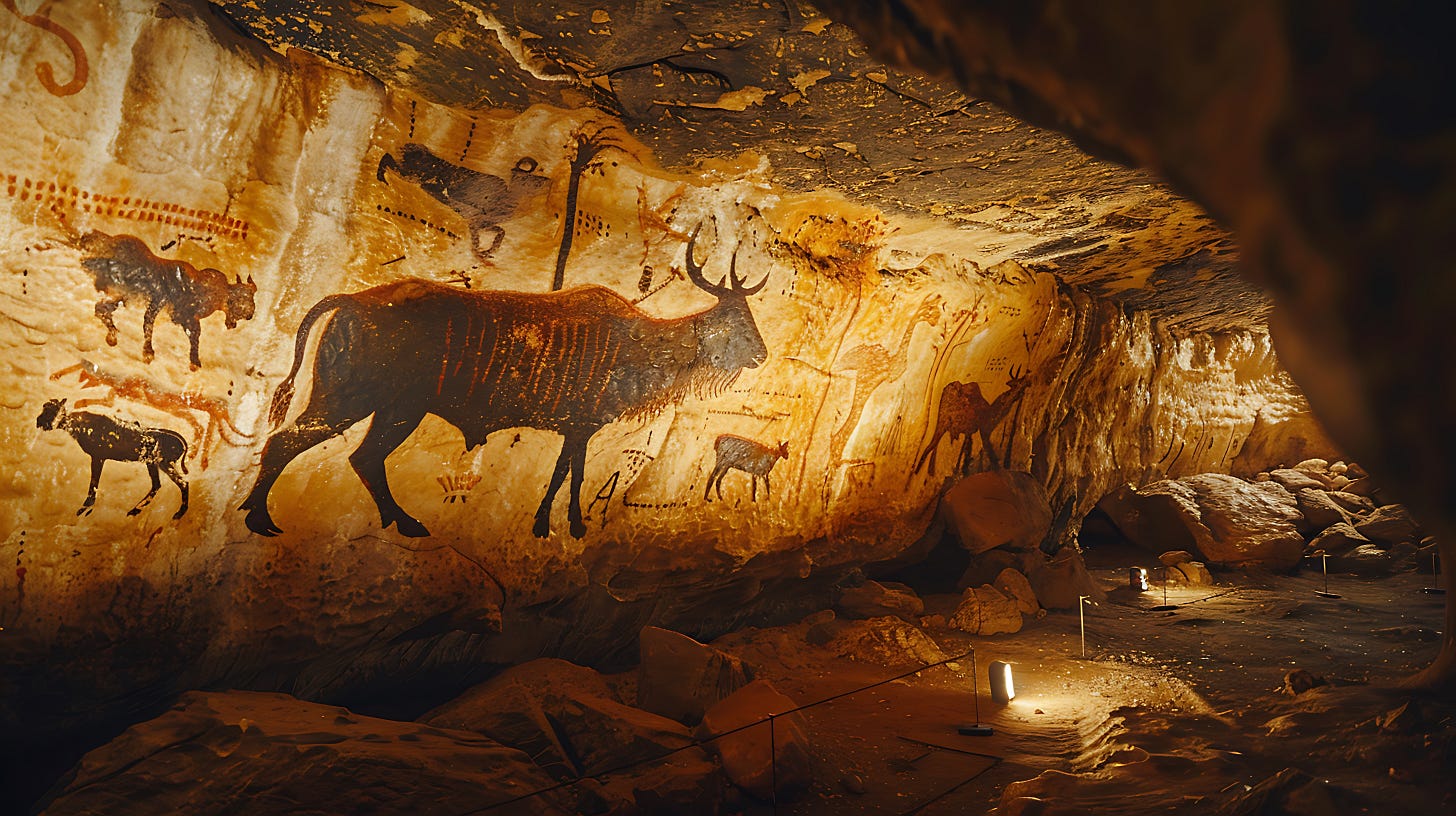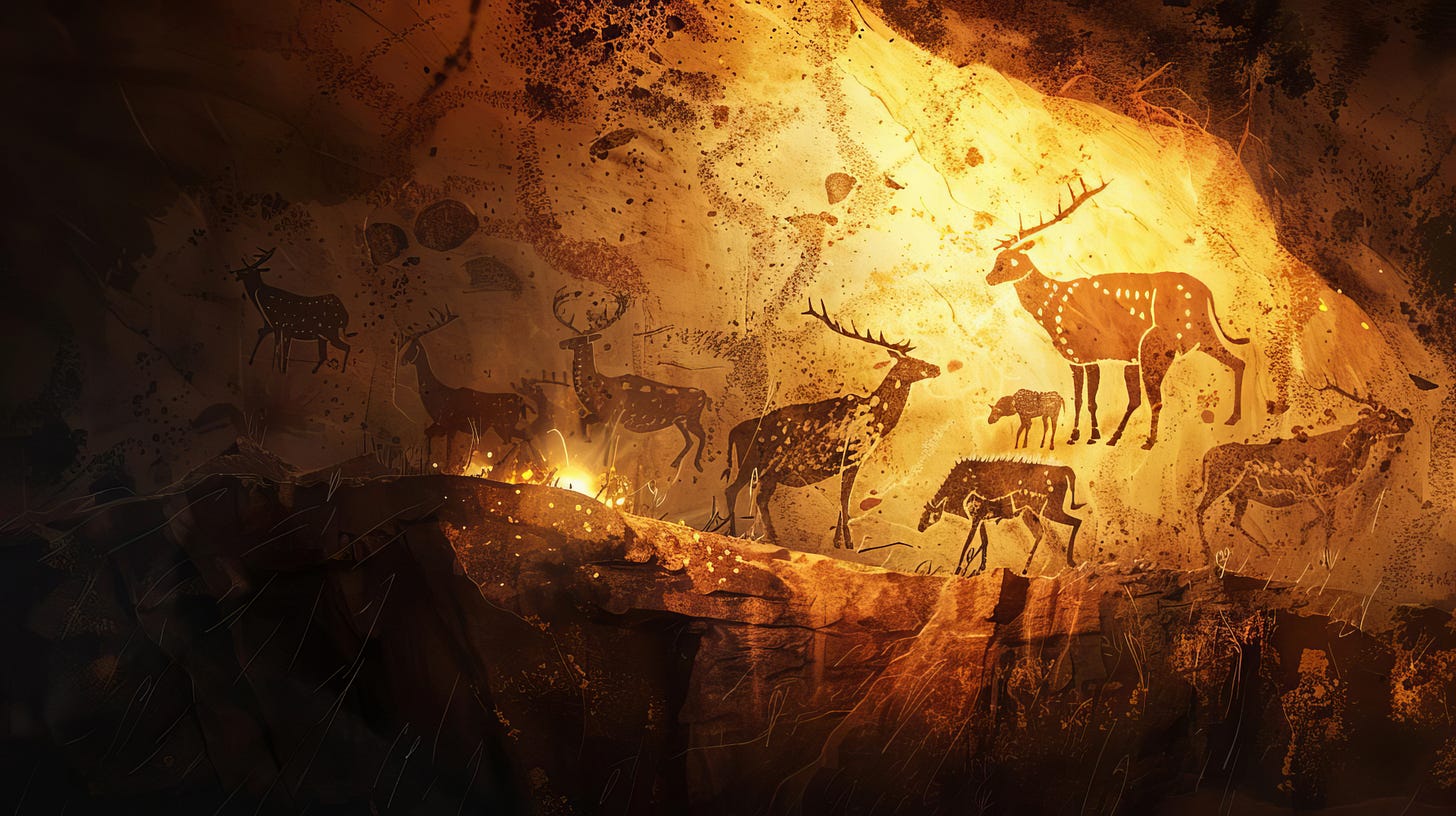In the Narrows: Lascaux II and the Geography of Hope
Essay and TEDx Talk by Leslie Van Gelder
From the Wayfarer Archive, 2015
When the replica of Lascaux was built into a low hillside near the original cave in Montignac, France, a decision was made to reverse the ‘sense of the visit’, so that the visitor would arrive immediately into the grand Salon of Bulls and be brought almost instantly into the majesty of the art. While a small interpretive chamber precedes entrance into the cave and allows the guides a teaching space to dispel myths and create interest for those who have come simply because in both senses of the word, on a summer’s day they have heard that the replica is “cool,” the immediacy of arriving in the Salon often leaves people breathless from the shock of being in the presence of so much art and at such a grand scale. At the Sistine Chapel, to which it is often compared, one has already walked the whole length of the Vatican to get there. In Lascaux II it is immediate.
The chamber itself is large and oblong with the shape and feel of a Viking longhouse. Along the high walls run black shadow horses who meet a delicate tribe of deer, their antlers filigreed like tree branches held up on heads raised as if they are sniffing the wind across a snowy plain. Above them thunder spotted white bulls for which the hall is named. White bodies born of limestone brought from the walls by hands holding black manganese with such certainty that the bulls leap from the walls themselves, their legs suspended in flight. In the cacophony of images, some 130 in all, the overall sensation for me has always been an auditory one. Absent the true red bellied Chinese horses and the black shadow sprayed true auroch’s bodies, I hear their hooves and feel their bodies as if I were in the midst again of the wildebeest migration in the Serengeti I once experienced as a fugue of hooves, horns, and dust, when I was a child.
The guides, conscious of time and the next tour which must begin promptly at quatre heure talk through the whole visit. They use their red laser pointers to show the ways in which the artists outlined the shapes of some of the larger animals before they sprayed ochre, probably ground up in their mouths and then either spat in a pattern like our modern day spray paint cans, or through a bone or reed straw for far more accuracy. The skill in the artistry alone is dazzling.
For those for whom this might be their only visit to a cave or a painted cave, the guide’s curation of the exhibit, not unlike taking the tour at the Met, might feel just right. For me, though, after years of working in neighboring caves where we have the time to be able to move more slowly through and to take in not only the images, but the images set inside the soundlessness of the space itself, and to be able to feel the vibrations of our voices set off from the cave walls, it is a very different experience. At Lascaux II on a Sunday at the height of summer tourist season, I couldn’t hope for such resonance.
And yet, we had been lucky. I had brought a group of friends who had been together at a conference in western France for a few days of seeing the caves in the Dordogne. We had arrived late and our tour was the last tour of the day. The group was small, and because our group included two interested adolescents whose response to the cave was so palpable, the guide took her time, letting us linger in the Salon before leading us down into the Axial gallery below.
On previous tours with larger groups of people, visiting the Axial gallery had been as pleasant as the London Underground during July rush hour. While the walls of the Salon of Bulls are wide and expansive, in the Axial gallery, the feeling of the narrow stream that would have carved the cave becomes apparent. High walls rise in tight and the floor slopes gradually downward towards the image of a falling horse. Above, the ceiling floats with the bodies of ochred aurochs, horses, including my favorite – a tiny blown black horse tucked innocently into the wall, like a toy left behind after a family who had lived there for 5 generations had sadly moved away. A deer with antlers that in life would have weighed hundreds of pounds graces the right side wall with its graceful head up, facing the wind. Its long back is a single uplifted calligraphic stroke.
Because the walls come in so close and at a height that gives the feeling of being corralled by palace guards, the only place to look is up. In that, the sense of the passage and the art flowing through it is as unmistakable as the feeling one has standing beneath the Milky Way as it curves westward across the night sky.
On this June trip, as the guide was in no rush, she let us stay in the Axial gallery in a spot I would call the Narrows for long enough for the group to grow quiet and simply feel the space. With the vibrations from our voices finally quieting, the closeness of the walls produced a feeling in my chest I knew from the past the feeling of grief. A sort of heartache that has in it both all of the sadness I feel tangled in the colors of joy.
“You feel it?” she said quietly to me in French.
I nodded. “What is it?”
Keep reading with a 7-day free trial
Subscribe to Wayfarer Magazine to keep reading this post and get 7 days of free access to the full post archives.




